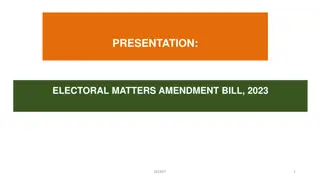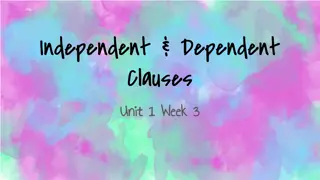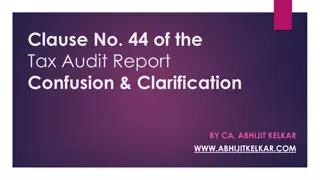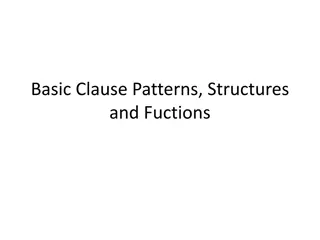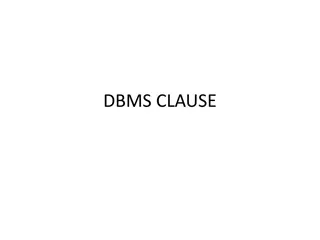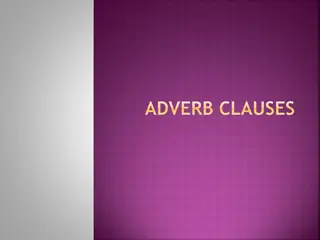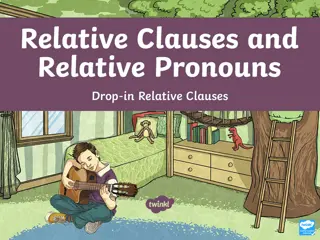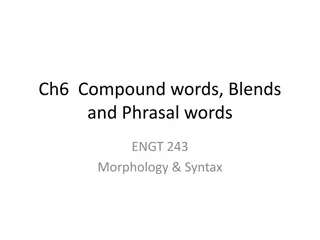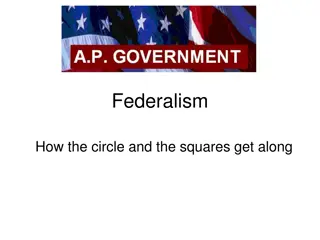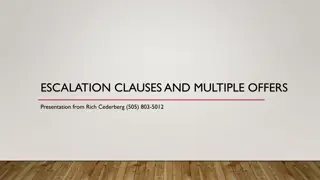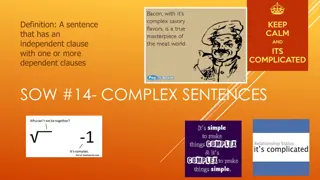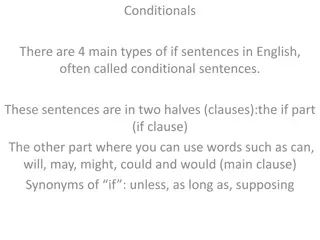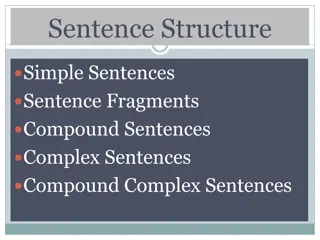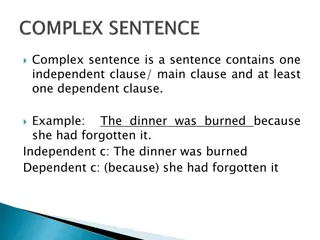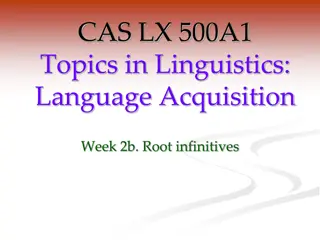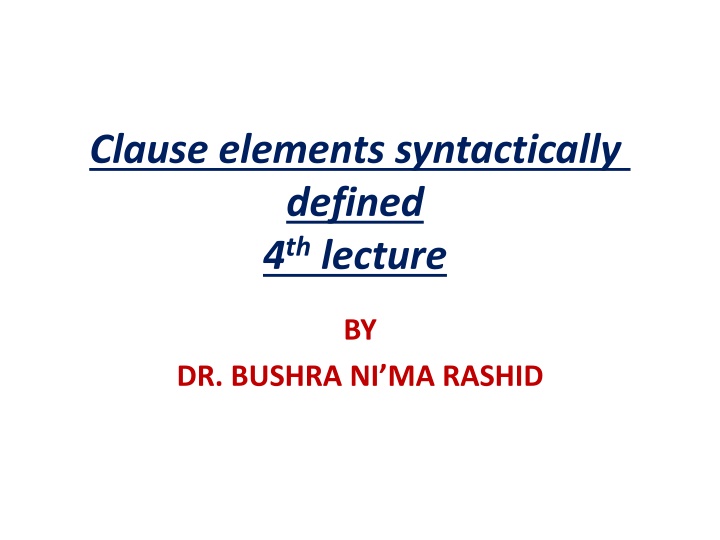
Clause Elements Defined Syntactically in Linguistics
Explore the syntactic definition of clause elements in linguistics, including the concept of empty subjects like 'it', locative and affected direct objects, and deverbal nouns. Learn about the semantic roles of different objects in a sentence and their significance. Discover how these elements contribute to the overall structure and meaning of a sentence.
Download Presentation

Please find below an Image/Link to download the presentation.
The content on the website is provided AS IS for your information and personal use only. It may not be sold, licensed, or shared on other websites without obtaining consent from the author. If you encounter any issues during the download, it is possible that the publisher has removed the file from their server.
You are allowed to download the files provided on this website for personal or commercial use, subject to the condition that they are used lawfully. All files are the property of their respective owners.
The content on the website is provided AS IS for your information and personal use only. It may not be sold, licensed, or shared on other websites without obtaining consent from the author.
E N D
Presentation Transcript
Clause elements syntactically defined 4thlecture BY DR. BUSHRA NI MA RASHID
8. Empty 'it' Subject: one that lacks semantic content, (no participant is required). It is getting dark. * Prop it mainly occurs in clauses signifying a) time, b) atmospheric conditions, and c) distance. a) It's ten o'clock precisely. b) b) It is raining.
c) It's not far to York. Semantic role of the object: 1- Affected Od 2- Locative Od 3- Effected Od 4- Recipient Oi 5- Affected Oi 1- Affected direct object: A participant which does not cause the happening denoted by the verb but is directly involved in some other way. - James sold his digital watch yesterday.
- Many MPs criticised the prime minster. 2- Locative direct object: One that shows location and is often found after such verbs as ( turn, leave, reach, cross, surround, penetrate, climb, ) - They climbed the mountain. More examples: I crossed the street. (Locative) I dug the street up. (affected) They climbed the mountain. (locative)
They destroyed the mountain. (affected) 3- Effected direct object: 1) object that exists only by virtue of the activity indicated by the verb: I am writing a letter. Baird invented television. I am burning a letter. (affected) 2) object that repeats partially or wholly the meaning of the verb: Mary sang a song. We fought a good fight-and lost.
3) object that takes a form of a verbal or a deverbal noun preceded by a common verb of general meaning: (have, do, make, take, give, pay, ) He did little work that day. The prisoner made no comment. * Contrast the affected object in "I'm digging the ground", with the resultant object in "I'm digging a hole". Q. What's a deverbal noun?
Deverbal nouns which are derived from verbs or verb phrases, but which behave grammatically purely as nouns, not as verbs. [e.g. organization derived from the verb organize, the noun construct from the verb construct, and discovery from the verb discover.] Note: effective object sometimes and in some books is called eventive object. This object is semantically an extension of the verb and bears the major part of the meaning. Compare:
- They are arguing. (verb only) - They are having an argument. (verb+ eventive/effective object) other examples: I gave them some advice. Sarah is doing her homework. The baby's having a bath. We made allowance for his inexperience. I took a shower earlier
The construction with the eventive / effective object provides greater weight than the corresponding SV type, especially if there are no optional adverbials, and is often preferred to the SV construction in informal English. 4- Recipient indirect object: An animate participant being passively implicated (involved) by the happening or state.
I have found you a place. He gave his son some money. We paid them the money. 5- Affected indirect object (exceptional): is the one exception to the normal role of recipient taken by the indirect object. The affected indirect object combines with an eventive Od, and the most common verb is give:
- I gave Helen a nudge [I nudged Helen] - We gave the baby a bath [We bathed the baby] - I should gave the car a wash [I should wash the car] - Judith paid me a visit [Judith visited me] *me-affected, visit-effected - Derek owes us a treat [It's Derek's turn to treat us]
Note: The Oi has the same role as the affected direct object in the paraphrase. This is when give (or sometimes related verbs like; pay, owe) has an effected object as Od and an affected object as Oi. Note: The object may occasionally be instrumental as in: We employ a computer for our calculations. She is playing the piano. He nodded his head
Summary: Although the semantic functions of the elements (particularly S and Od) are quite varied, there are certain clear restrictions, such as that the object cannot be agentive, a subject (except in the passive) cannot be resultant; an indirect object normally has only two functions: those of recipient, and affected. The following system of priorities generally obtain:
-If there is an agentive, external causer, or positioner, it is S; if not. -If there is an instrument, it is S; if not. -If there is an affected item, it is S; if not. -If there is a temporal, locative, or eventive item, it may be S; if not, the prop word it is S. Note: Naturally, where the passive transformation applies, it transfers the role of the Od or Oi to the S.
Note: The above treatment of sentence elements does not include discussion of clauses as S, O, C.


